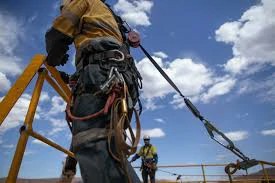Why Clear Communication is Essential for Safety When Working at Heights
Working at heights presents unique challenges and risks. Ensuring the safety of workers is paramount, and effective communication serves as the backbone of workplace safety, particularly in high-risk environments. In this blog post, we will delve into how clear instructions, teamwork, and emergency signaling collectively contribute to reducing accidents when working at heights.
The Importance of Communication in Working at Heights Safety
Effective communication plays a crucial role in enhancing safety measures. Poor communication can lead to misunderstandings, inappropriate responses, and ultimately, accidents. Implementing robust communication strategies helps align the entire team towards the common goal of ensuring safety. Here’s how:
1. Clear Instructions
- Detailed Briefings: Providing clear verbal instructions can significantly reduce the chance of accidents and mishaps. Before each project or task, conduct safety briefings to ensure that all workers understand their roles.
- Written Guidelines: Providing written instructions in the form of job safety analysis (JSA) or standard operating procedures (SOPs) can serve as a reliable reference for workers.
- Use of Visual Aids: Diagrams, handouts, and flowcharts can help workers visualize safety measures and protocols, making it easier to follow instructions correctly.
2. Team Coordination and Cooperation
Teamwork is essential when working at heights. Establishing a culture of cooperation ensures that all members can communicate effectively. Here are some strategies for improving teamwork:
- Pre-task Meetings: These allow team members to discuss the work at hand and share any concerns. Encourage open communication to identify potential risks before beginning the job.
- Role Assignments: Clearly defining roles helps prevent duplication of tasks and ensures that everyone knows their responsibilities.
- Monitor Communication Channels: Establish consistent communication channels—such as two-way radios or designated signs—to facilitate an open line of communication throughout the project.
3. Emergency Signaling
In high-risk environments, ensuring everyone understands emergency procedures is vital. Effective emergency signaling can prevent accidents from escalating and ensure rapid response. To enhance signaling protocols:
- Standardized Hand Signals: Train workers in hand signals that convey important safety information or instigate action without verbal communication.
- Clear Alarm Systems: Ensure that alarm systems are in place and that workers know what each signal means.
- Regular Drills: Conduct emergency response drills regularly to keep everyone prepared and familiar with the procedures.
Best Practices for Effective Communication
Here are some best practices that workplaces can adopt to improve communication about safety while working at heights:
- Integrate Communication into Training: Incorporate communication strategies in your Working at Heights Training programs to ensure that every worker is equipped with the necessary skills.
- Feedback Mechanisms: Encourage workers to provide feedback on communication methods and practices. This input can lead to continuous improvement.
- Regular Updates: Keep safety measures and protocol guidelines up-to-date and accessible.
Real-World Impact of Effective Communication
Several case studies highlight the importance of effective communication in preventing accidents:
- Case Study 1: A construction site in Dublin implemented clear signage and hand signals. This change led to a 30% reduction in near-miss incidents over six months.
- Case Study 2: In Galway, a company improved its emergency response training, incorporating regular drills and communication protocols, reducing the incident rate of falls significantly.
Conclusion
Effective communication is not just a nice-to-have but a necessity in ensuring safety when working at heights. By promoting clear instructions, fostering teamwork, and implementing efficient emergency signaling, companies can significantly reduce the risk of accidents.
If you are interested in improving safety communication within your organization, consider enrolling in a Working at Heights Course Online. Safety is paramount, and investing in training ensures that your team is prepared and informed.
For more information, feel free to contact us at [email protected].



 349,500 Offered Certificates
349,500 Offered Certificates
 24/7 Online Training
24/7 Online Training
 Money Back Guarantee
Money Back Guarantee
 Fully Accredited Courses
Fully Accredited Courses
